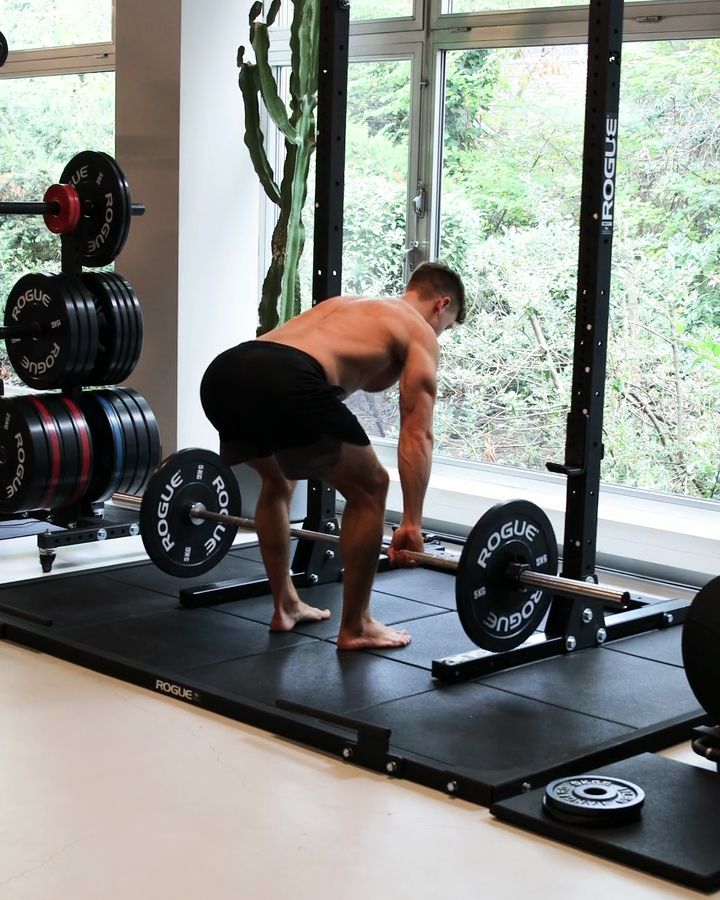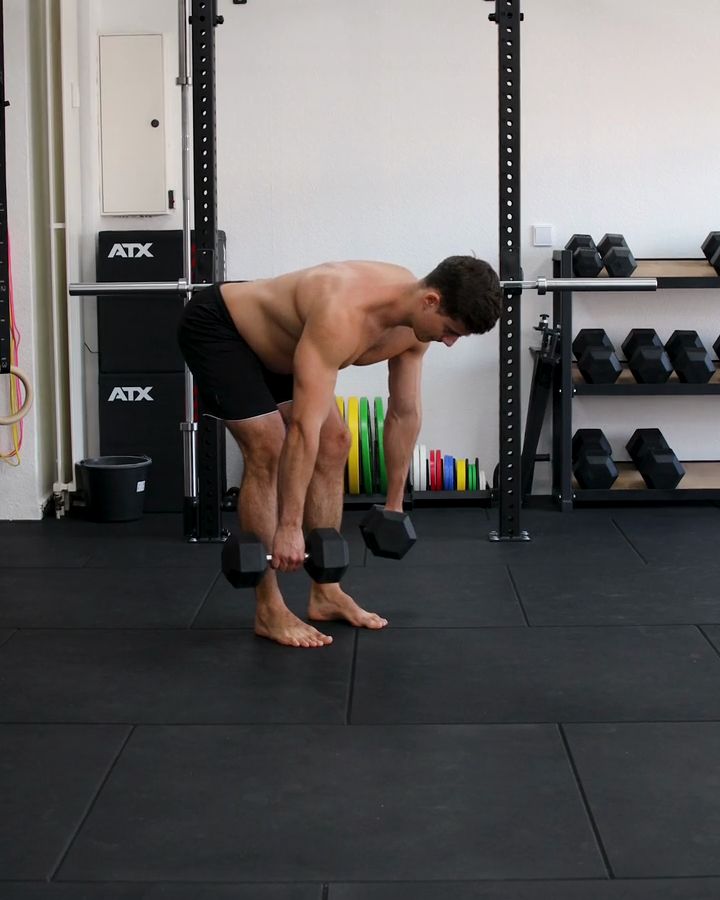Romanian Deadlift with a barbell
The Romanian deadlift, also known as the "Romanian Deadlift" or simply "RDL," is an excellent exercise for strengthening the posterior chain, particularly the lower back, hamstrings, and glutes. Unlike the classic barbell deadlift, where the movement starts from a deeper position, the Romanian deadlift keeps the knee position almost unchanged, with the focus on a controlled hip hinge. This allows for targeted activation of the posterior muscle groups while also being gentle on the knee joints.
The origin of the Romanian deadlift dates back to 1990 when a Romanian weightlifter introduced this technique in the United States to provide Olympians with a new method for developing strength and athleticism. Since then, the exercise has become a staple in gyms worldwide and can be performed with both barbells and dumbbells.
Necessary equipment
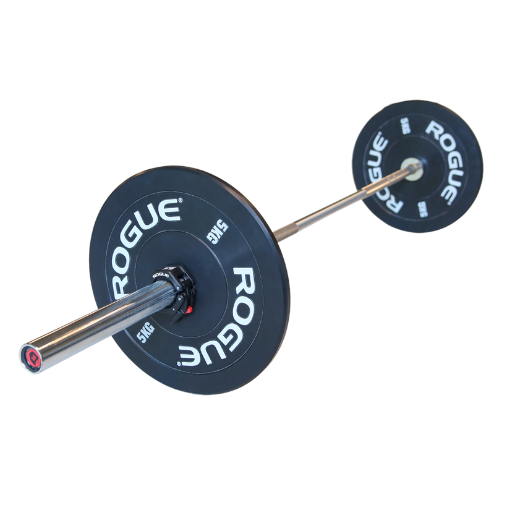
Romanian Deadlift with a barbell - the correct execution
- Start in hip-width stance
- Grip the barbell shoulder width apart
- Lift the barbell out of the bar under torso and gluteal tension and take one step backward
- Screw your feet into the floor so that your knees face outward
- Keep the shoulder blades down at the back (retraction, depression)
- Bend your hips under maximum tension in torso and buttocks
- Bring the barbell down to the floor as close to the body as possible
- Keep your upper body upright and your knees only slightly bent
- The head remains in a neutral position throughout the exercise
- Then pull the weight up again
- Keep the barbell close to the body during the pull up as well.
- The training weight for this exercise is the sum of the barbell's own weight and the additional weight plates
The exercise Romanian Deadlift is intended to be used as a hypertrophy, mobility exercise.
Which muscles are trained by Romanian Deadlift?








Primary trained muscles for Romanian Deadlift
Hamstrings - The hamstrings are muscle groups located at the back of your thigh. They help you bend your knee and extend your hip.
Secondary trained muscles for Romanian Deadlift
Glutes - The gluteus maximus is the large muscle in your buttocks. It is important for extending the hip, moving your leg backward, and stabilizing the hip joint.
Lower Back - The erector spinae muscle runs along your spine and helps you extend your back and stand upright.
Alternative variants of Romanian Deadlift with a barbell:
Romanian deadlift with dumbbells
The Romanian deadlift with dumbbells offers a greater range of motion compared to the barbell variant, as the dumbbells can be lowered deeper before touching the ground due to their size. This results in a more intense stretch of the hamstrings. While the barbell version is preferred for heavier weights and pure strength development, the dumbbell variant is excellent for improving hamstring mobility. Another alternative, the so-called sprinter deadlift, combines the benefits of the Romanian deadlift with unilateral loading.
Necessary equipment
~71a250d87b54c382097fe3ad87f5e64a.png?alt=media)
Romanian deadlift with dumbbells - the correct execution
- Start in a hip-width stance
- Screw your feet into the floor so that your knees point outward
- Keep your shoulder blades down at the back (retraction, depression)
- Hold the dumbbells with both hands in front of your hips
- Bend your hips with maximum tension in your torso and buttocks
- Bring the dumbbells down to the floor as close to your body as possible
- Keep your upper body upright and your knees only slightly bent
- Keep your head in a neutral position throughout the exercise
- Then pull the weight up again
- Make sure the dumbbells are held close to your body when you pull them up
- The training weight for this exercise is the weight of a single dumbbell. Therefore, train with two dumbbells that weigh the indicated weight
This could also be interesting
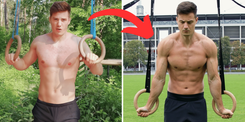
Calisthenics Body Transformation – How to Build a Strong, Lean, and Athletic Physique
Transform your body with Calisthenics! Build muscle, burn fat & achieve a shredded physique with bodyweight training. See real before & after results!

The Best Fitness Apps in 2025: Our Top 10 Recommendations
Don’t miss the best fitness apps of 2025: surprising favorites, free options, and perfect tools for your workouts. Find the ideal app today!
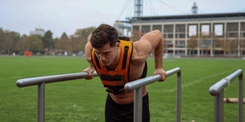
Complete Calisthenics Skills List – 40+ Exercises from Beginner to Pro
Which calisthenics skills should you learn first? And which ones will really help you progress? In this article, you’ll find a complete list of over 40 exercises – from the very basics to the toughest moves for professionals. Each exercise comes with instructions, so you can immediately integrate them into your training.
